When growing peppers, it is easy to feel unsure of your fertilizing habits. Am I fertilizing too often? Not enough? Is this Miracle-Gro even any good for my plants? Is it safe for veggies? I’ve been there, too.
After testing dozens of fertilizers, I now have a tried-and-true method for growing healthy and productive pepper plants. In this article, I’ll go through some of the best fertilizers for pepper plants. This will include both organic and chemical versions to suit all growers.
Quick summary: We recommend this all-purpose fertilizer (organic) for in-ground gardening, or this fertilizer trio (not all organic) for potted plants. Or, get this for the vegetative stage of growth and this for the blooming/fruiting stage of growth (organic options). Also, get a soil test for in-ground beds.
Fertilizing Peppers (Video):
There are countless fertilizer brands on the market today. Every gardener has their favorite, but it is best to know what is already in your soil first, before choosing a fertilizer.
However, the basic fertilizer regimen we use for peppers will work for a wide variety of fruiting garden plants, especially those grown in containers. Peppers go from seedling to leafy growth, and then right to flowering and producing fruits.
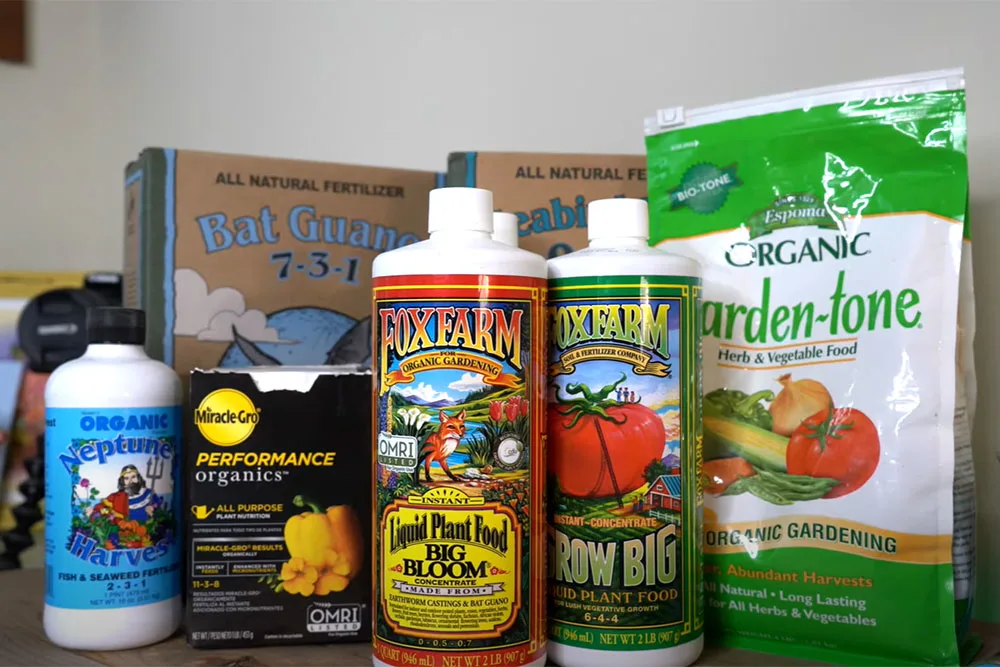
For peppers, we usually use two fertilizers through the growing season. The first fertilizer encourages leafy growth and root development, while the second stage fertilizer encourages flower and fruit production. I’ll which fertilizers we use, when and how often we use them, and where to buy them.
But first, I want to explain why we choose to use two fertilizers instead of just one.
Fertilizer Grades and Contents
On the packaging of most fertilizers, you will find a 3-digit number. This is an important number as it represents the percentages of three important elemental nutrients. It is called the ‘fertilizer grade.’
These numbers appear something like this:
- 3-4-4
- 5-5-5
- 2-3-1
The first number represents the amount of nitrogen, the second number is the amount of phosphate, and the last number is the amount of potassium in the fertilizer. This number is a national standard for fertilizers, and it is essential to understanding how the fertilizer will feed your pepper plants.
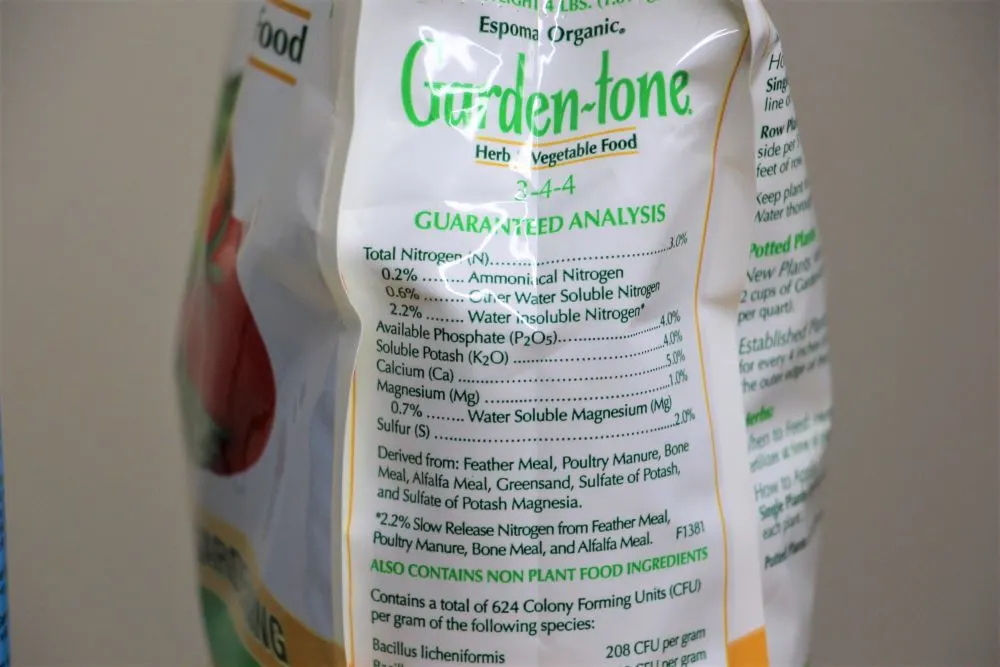
Primary Nutrients
There are three primary nutrients that are essential to all plant life. They correspond to the fertilizer grade directly, and can be derived from many sources (organically and inorganically).
- Nitrogen is first because it is the most important element for foliage production and overall plant health. Nitrogen is essential to the process of photosynthesis in new leafy growth. This is why lawn fertilizers have a large amount of nitrogen. It is also the most likely nutrient to become deficient in the soil.
- Phosphate is a nutrient that gives plants phosphorus, an essential nutrient in most life forms, allowing plants to take in energy from the sun.
- Potassium is essential to plant life because of its role in water and nutrient movement throughout the plant’s tissue. Without potassium, the regulation of photosynthesis could also be compromised.
Each element helps in a wide variety of ways, but these are their most critical roles. With this understanding, we can understand how any given fertilizer will impact plants.
Secondary Nutrients
While the main three nutrients are the most important, there are several secondary nutrients and trace elements, that are also critical for ideal growth of peppers.
- Calcium is very important for healthy cellular development in pepper leaves and fruits. If your fertilizer does not contain calcium, be sure that your soil does. It is rare for ground soil to be deficient in calcium. If you need to, you can amend your soil with bone meal to add calcium.
- Magnesium is important for healthy, green foliage. Epsom salt is one method to amend soil with magnesium and sulfur, but should only be done if you know it is required. A magnesium deficiency can cause stunted plant growth and inter-veinal yellowing.
Beneficial Bacteria
While basic elementals are the fuel for growing healthy pepper plants, soil-based bacteria play an important role in a healthy garden. Some examples include bacillus licheniformis, bacillus megaterium and other colony-forming bacteria.
Many fertilizers will include these beneficial bacteria, so be sure to check the content analysis for them! For in-ground gardening, building healthy, living soil is essential.
Best Fertilizer For Pepper Plants
When you plant a pepper seed, the seed itself contains the nutrients required to germinate and become a small seedling. However, after just a few days, the plant will require additional nutrients from the soil.
To put it simply, pepper plants require plenty of nitrogen during early growth to produce healthy leaves and roots. During the fruiting stage, plants need less nitrogen but plenty of phosphorus and potassium for the best yields. This can be achieved using a well balanced fertilizer all season, or by switching fertilizers halfway through the growing season to reduce nitrogen.
Want to keep it simple?
Perhaps the simplest fertilizer regimen is a slow release, all-purpose fertilizer. These granulated blends contain all the primary and secondary nutrients that peppers need to thrive. They can also last for months before needing replenishment!
Less frequent feeding, easy application, all organic, what more could you want?
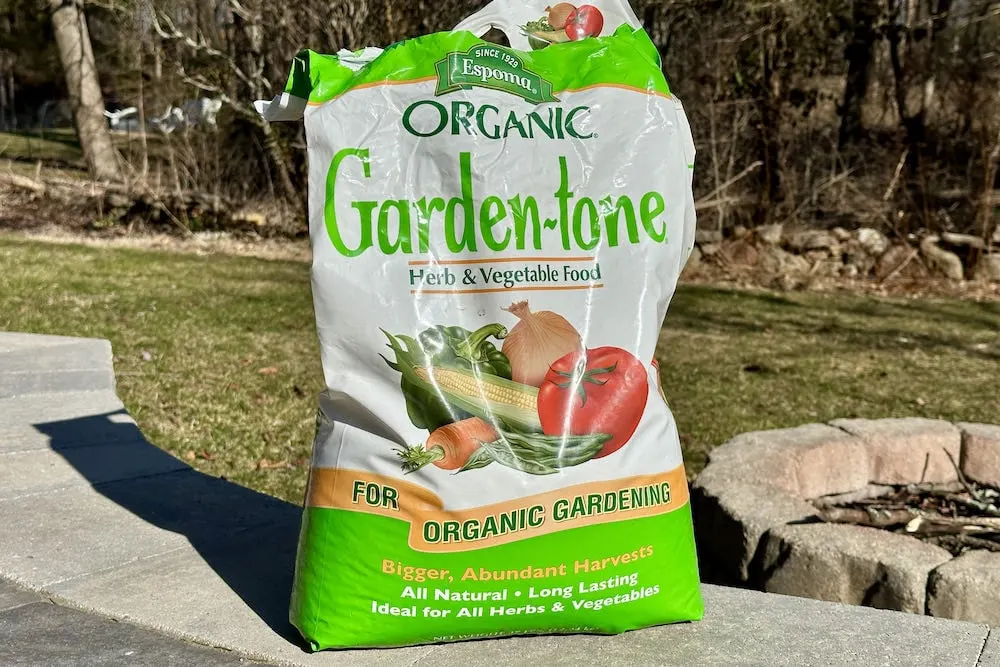
Another great option to really dial in the nutrient levels is Fox Farm’s trio of fertilizers. They have a straight-forward feeding schedule which makes the growing process a lot easier, especially for potted plants. This may not be the ideal fertilizer for in-ground gardens, especially if you haven’t performed a soil test.
Be careful not to over-feed with these nutrients – they can burn!
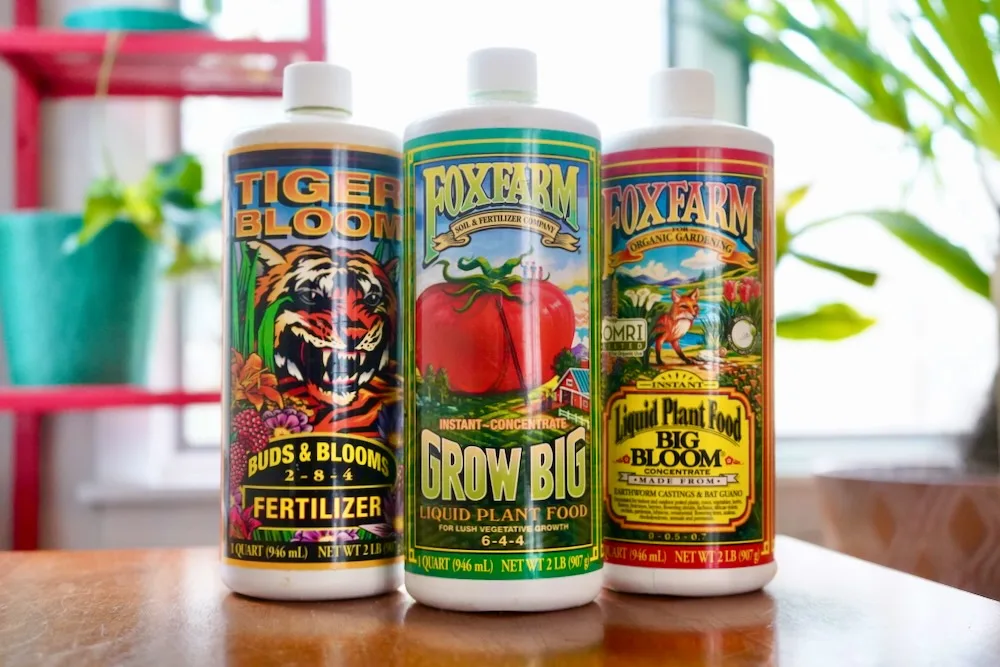
Stage 1 Fertilizer for Peppers
One fertilizer I like specifically for early growth is Miracle-Gro Performance Organics (11-3-8). This water-soluble mixture provides the 3 basic nutrients along with other secondary nutrients for young, growing plants.
With an 11% nitrogen makeup, we know our plants will grow strong, plentiful leaves in the early stages of growth. However, we wouldn’t want to use this throughout the summer, as it may inhibit the production of peppers.
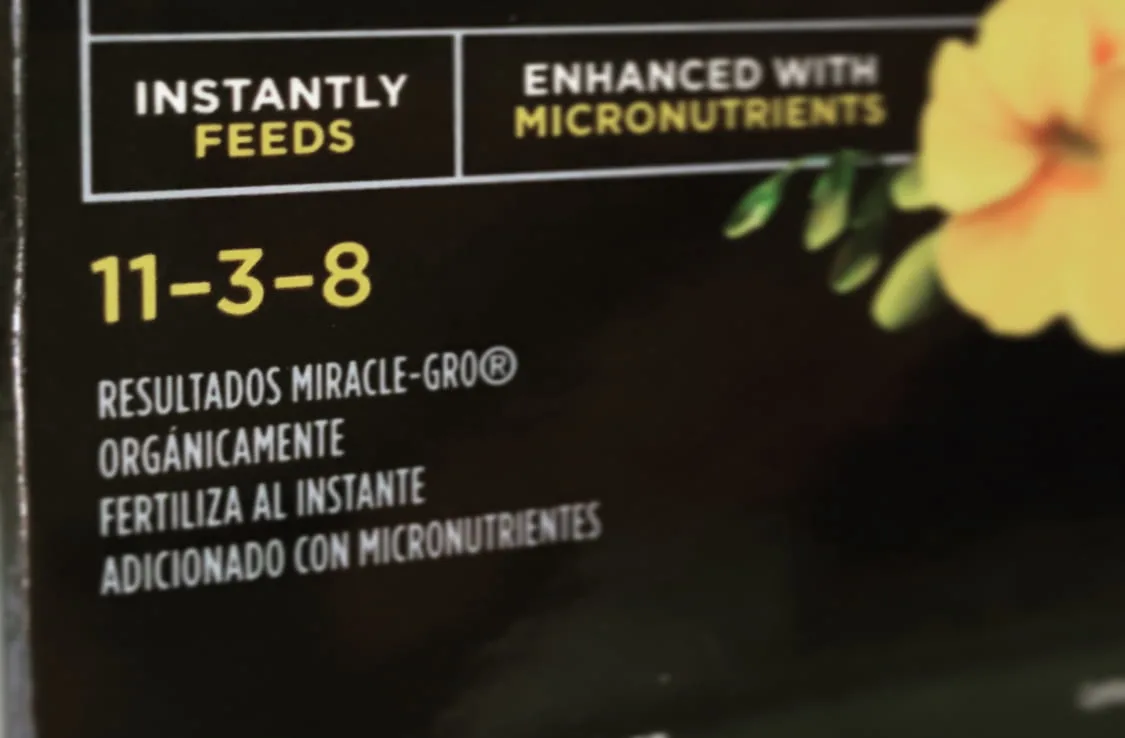
Tip: This fertilizer is another great option for using all season. However, consider reducing the frequency and/or amount after the plants begin fruiting.
When pepper plants are just starting to grow, they should focus energy on growing a large canopy of foliage to take in lots of energy from the sun. This will help generate maximum energy later on when the plant is producing peppers.
Stage 2 Fertilizer for Peppers
If we kept providing lots of nitrogen, the plants will look healthy with lots of leaves, but may ultimately produce fewer peppers. For this reason, I recommend reducing the strength of early-stage fertilizer, or switching to something with less nitrogen.
Once pepper plants have begun sprouting flowers, you can try a flowering-stage fertilizer. These usually have less nitrogen, but provide plenty of phosphorus and potassium for fruit production.
One great fertilizer we use for the blooming stage of growth is Neptune’s Harvest Fish & Seaweed (2-3-1).
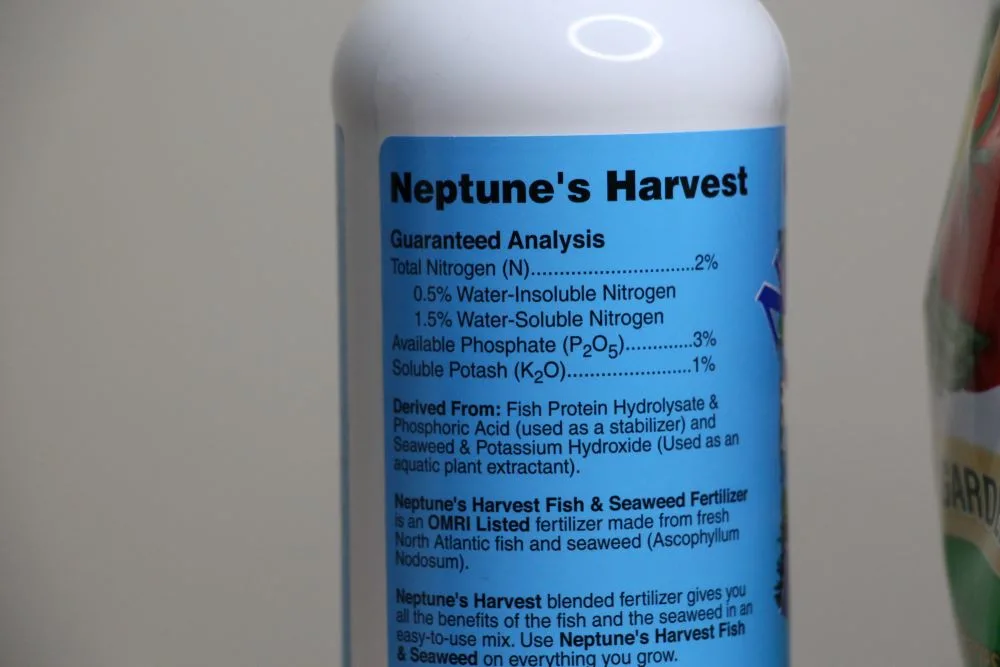
Note: This fertilizer is not ideal as an all-season fertilizer. It does not provide calcium or magnesium, so you may have to supplement if your potting soil lacks these nutrients. It also has a slightly fishy smell. However, it works great as an all-season supplement!
Another stage-two fertilizer is Fox Farm’s Tiger Bloom. While it is not organic, this liquid fertilizer is easy to apply while watering and is great for potted plants. It is potent, so be sure to follow the instructions for proper dilution.
How Often To Fertilize Peppers
Many casual gardeners fertilize whenever they remember to do it. This is not ideal, as you may be over or under-feeding your plants. To get the most out of your pepper plants, you’ll want to keep track of when you fertilized last and stick to a schedule.
When to Start Fertilizing Young Peppers
Once your plants have sprouted their first true set of leaves, you can apply a light feeding of fertilizer. If you start seeds in seed starting mix, the soil likely does not contain any nutrients. That is why it is important to begin fertilizing as soon as the plants need it.
For most pepper varieties, fertilizing should begin about 1-2 weeks after the seeds have sprouted. The first application should be light (half strength at most, depending on fertilizer potency), as the tiny plants don’t grow very fast. However, fertilizer will play an essential role in forming healthy roots early on, as well as strong stems and leafy growth.
If your seeds were planted in a nutrient-rich medium, hold off on fertilizing until they are established in a final planting location. Compost, potting mix, and other soils often contain all the nutrients that peppers need, in which case there is no need to add more!
Pepper Fertilizer Frequency
Aside from the initial fertilizing (the first ~3-5 weeks of growth), which should be 1/4-1/2 the normal strength at most, we simply follow the packaging guidelines. Most fertilizers are administered weekly or bi-weekly.
Do not over-fertilize and expect good things to happen. Pepper plants require a steady supply of nutrients, not an abundance of nutrients all at one time.
Note: If you plant in a medium that has built-in nutrients (potting soil, etc.), hold off on fertilizer until the plants are more mature and have used the available nutrients.
Nutrient Burn and Flushing
If you provide too much fertilizer, your pepper plants will show you. Leaves will develop brown spots, usually towards the edge of the leaf.
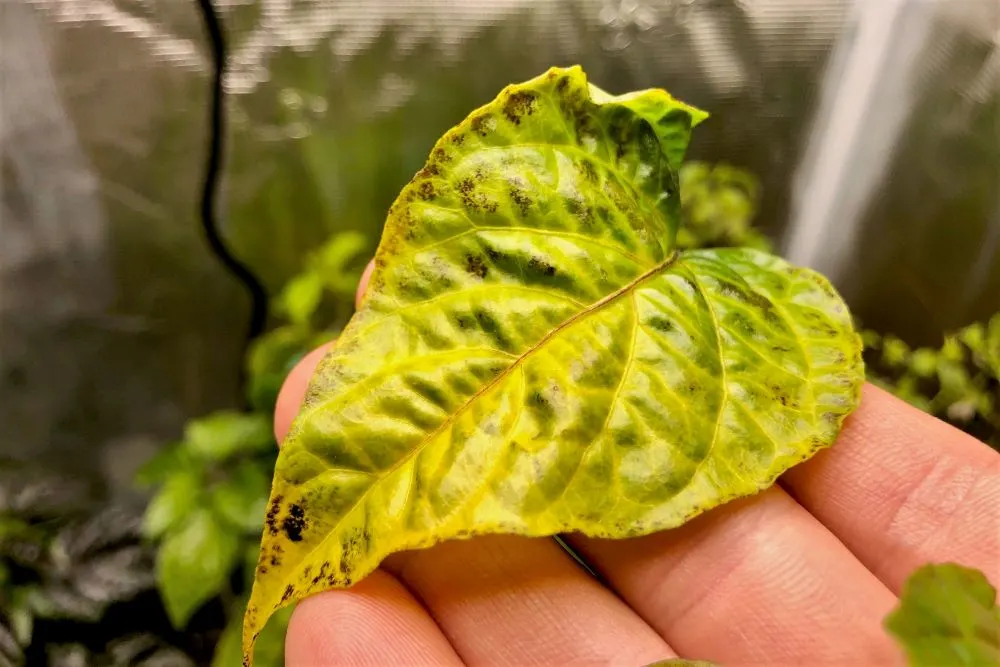
If you notice brown spots and have ruled out disease, you may be over-feeding your plants. Non-organic liquid nutrients are the most likely to cause nutrient burn, since they are immediately available for plant use. One option is to flush the nutrients from the soil to reduce the amount of excess compounds.
To flush your potted pepper plants, water the plants with plain water, allowing the excess water to flow out of the pot’s drainage holes. This process washes away some of the excess nutrients from the soil and root system.
If your plants are in a raised bed or in the ground, simply water without nutrients, skipping a few weeks of fertilizing. Basically, allow time for the fertilizer to be used by the plants before adding more.
Soil pH
While nutrients are what fuel healthy pepper plant growth, the pH of your soil is arguably just as important. Most peppers grow best in a soil pH between 5.8-6.8, or slightly acidic soil.
Why is pH important, you ask? Well, if the pH is too low or too high, your pepper plants may not be able to access and use the nutrients from the soil, even if they are present. This is called ‘nutrient lockout’ and can be detrimental to productivity and overall plant health.
You can test your soil’s pH with a simple meter, though the readings are often inaccurate. If you suspect you have alkaline soil, you can get a soil test.
Read Next:
I hope this article helps you choose the best fertilizer for your pepper plants. Remember, it’s important to “listen” to your plants. If a plant is unhealthy or nutrient deficient, you’ll know it!
What works for some people in certain climates may not work for others, so experiment with new feeding regimens. What’s your favorite fertilizer? Feel free to leave questions or suggestions in the comments below.

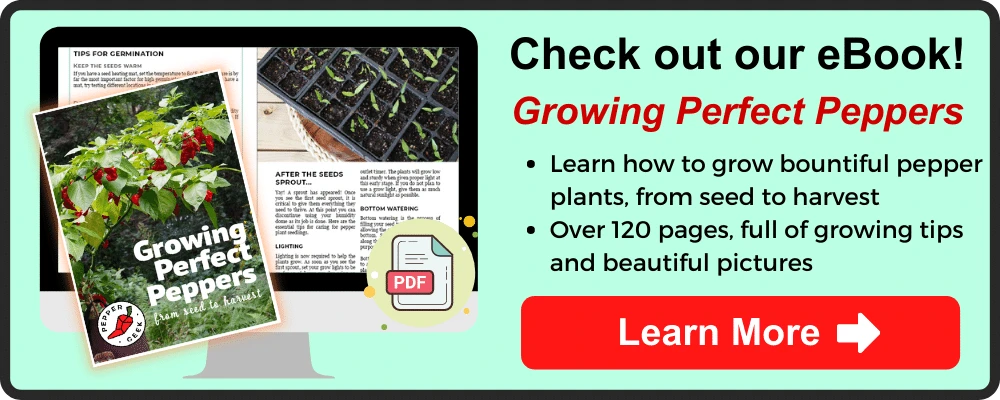
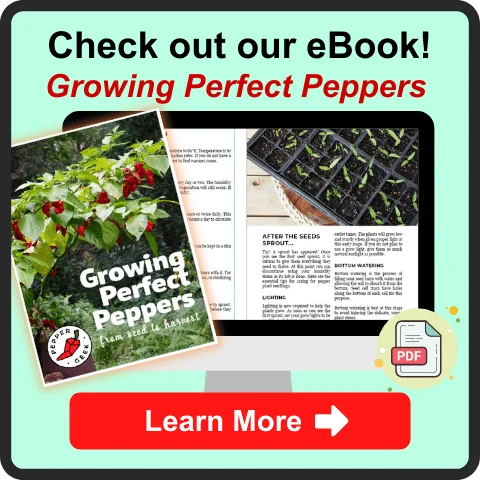

Daphne
Wednesday 17th of April 2024
Thank you so much for all your knowledge and sharing it! I’m new to pepper growing but with your videos and advice I know I’m off to a good start!
peppergeek
Wednesday 17th of April 2024
I'm so happy to hear that! Thanks for the kind words, and best of luck with your plants!
Julie
Monday 15th of April 2024
Good info, but no mention of Marconi peppers, which I’ve become more favored & love long “sweet” banana’s than Bell peppers & any “hots@. Are Marconi’s fertilized the same as Bells?
peppergeek
Wednesday 17th of April 2024
Yes, I'd treat them the same as bell peppers. Nitrogen early, then giving a feeding of nitrogen and potassium once the plants start fruiting.
Michele
Wednesday 21st of February 2024
Have you ever tried fertilizing with coffee?
peppergeek
Wednesday 21st of February 2024
It is best to compost your spent coffee grounds rather than applying directly to the garden. It's a great compost addition, and easy to find a bunch for free at local coffee shops
Liz
Sunday 8th of October 2023
Thank you so much for all the information! I'm super excited to start my pepper growing journey and this helps sooo much! It's nice to have a guide line rather than just doing trial and error until something works lol I'll for sure be coming back and referring to your website or Youtube for more! Thanks again, keep doing what you do! :)
JonTopps
Friday 8th of September 2023
Does it matter what kind of epsom salt you use? like the big buckets you can get for having baths in, is that fine because it's still epsom salt? or is there a big difference?
peppergeek
Saturday 9th of September 2023
As long as it is pure magnesium sulfate it is all the same from there. More important is making sure your plants truly need it!